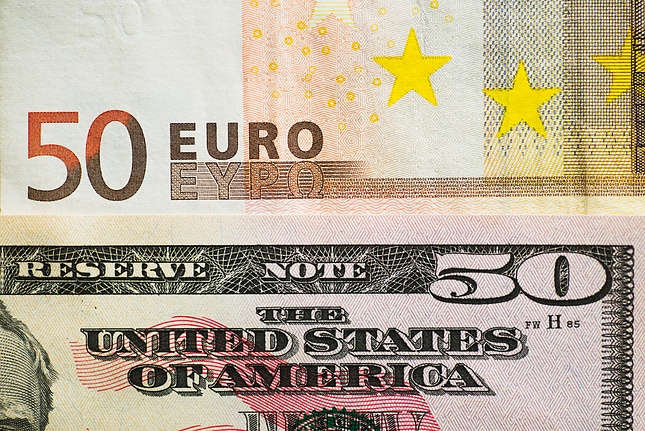Bert Colijn, Senior Economist at ING, explains that Eurozone growth was confirmed at 0.5% QoQ for Q1 and while growth in the second quarter is set to remain strong, potential growth remains weak.
Key Quotes
“While an end to QE is coming closer, this sluggish trend growth limits the potential for rate hikes in the years ahead.”
“Eurozone growth in Q1 was confirmed at 0.5% QoQ, marking a good start to the year. Even though political uncertainty was high in the first quarter, Eurozone growth outpaced the US and UK. While growth in France and the Netherlands weakened somewhat ahead of elections, from 0.5 to 0.3% and 0.6% to 0.4% respectively, growth strengthened in Germany, Spain and more markedly in Portugal and Finland. While the breakdown by components will not be released until later, it is expected that domestic demand has continued to drive growth in the beginning of the year.”
“For the quarters ahead, political risks have faded to the background until the Italian elections as Macron has been elected French president, meaning that Eurosceptic parties have not taken control of the Eurozone as investors had feared at the start of the year. On top of that, backlogs of work have increased considerably in Q1, meaning that industrial output in the second quarter will likely be strong. This means that strong growth is set to continue in the months ahead.”
“Even though growth has remained strong despite political uncertainty, structural factors continue to hold back Eurozone trend growth. As the output gap will be closed in a year or two, it is important to see whether this growth pace can continue when “catch-up growth” ends. It seems that this is difficult as trend growth has slowed over the crisis years.”
“Key to further improvements in Eurozone growth potential are f.e. continued structural reforms, steps towards the completion of the single services market and a further deepening and strengthening of the monetary union. In that regard, the meeting between Merkel and Macron yesterday was encouraging. Merkel’s open attitude towards treaty change to allow further integration could potentially be a first cautious step towards a stronger growth trend in the Eurozone.”
Information on these pages contains forward-looking statements that involve risks and uncertainties. Markets and instruments profiled on this page are for informational purposes only and should not in any way come across as a recommendation to buy or sell in these assets. You should do your own thorough research before making any investment decisions. FXStreet does not in any way guarantee that this information is free from mistakes, errors, or material misstatements. It also does not guarantee that this information is of a timely nature. Investing in Open Markets involves a great deal of risk, including the loss of all or a portion of your investment, as well as emotional distress. All risks, losses and costs associated with investing, including total loss of principal, are your responsibility. The views and opinions expressed in this article are those of the authors and do not necessarily reflect the official policy or position of FXStreet nor its advertisers. The author will not be held responsible for information that is found at the end of links posted on this page.
If not otherwise explicitly mentioned in the body of the article, at the time of writing, the author has no position in any stock mentioned in this article and no business relationship with any company mentioned. The author has not received compensation for writing this article, other than from FXStreet.
FXStreet and the author do not provide personalized recommendations. The author makes no representations as to the accuracy, completeness, or suitability of this information. FXStreet and the author will not be liable for any errors, omissions or any losses, injuries or damages arising from this information and its display or use. Errors and omissions excepted.
The author and FXStreet are not registered investment advisors and nothing in this article is intended to be investment advice.
Recommended content
Editors’ Picks

EUR/USD climbs above 1.0500 on persistent USD weakness
EUR/USD preserves its bullish momentum and trades above 1.0500 on Monday. In the absence of high-impact data releases, the risk-positive market atmosphere makes it difficult for the US Dollar (USD) to find demand and helps the pair push higher.

GBP/USD rises to 1.2600 area as mood improves
Following a short-lasting correction, GBP/USD regains its traction and trades at around 1.2600. The US Dollar struggles to stay resilient against its rivals as market mood improves on Monday, allowing the pair to build on its bullish weekly opening.

Gold turns bearish and could test $2,600
After recovering toward $2,700 during the European trading hours, Gold reversed its direction and dropped below $2,650. Despite falling US Treasury bond yields, easing geopolitical tensions don't allow XAU/USD to find a foothold.

Five fundamentals for the week: Fed minutes may cool Bessent boost, jobless claims, core PCE eyed Premium
Will the rally around Scott Bessent's nomination continue? The short Thanksgiving week features a busy Wednesday packed with events, and the central bank may cool the enthusiasm.

Eurozone PMI sounds the alarm about growth once more
The composite PMI dropped from 50 to 48.1, once more stressing growth concerns for the eurozone. Hard data has actually come in better than expected recently – so ahead of the December meeting, the ECB has to figure out whether this is the PMI crying wolf or whether it should take this signal seriously. We think it’s the latter.

Best Forex Brokers with Low Spreads
VERIFIED Low spreads are crucial for reducing trading costs. Explore top Forex brokers offering competitive spreads and high leverage. Compare options for EUR/USD, GBP/USD, USD/JPY, and Gold.